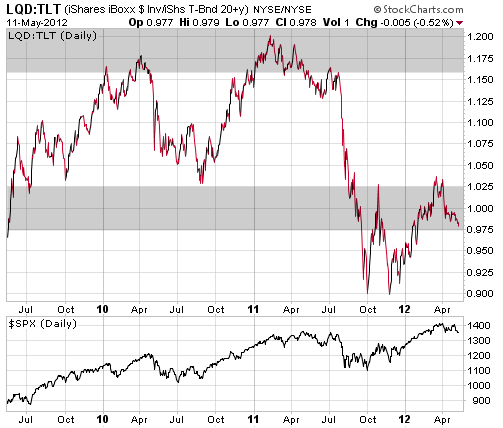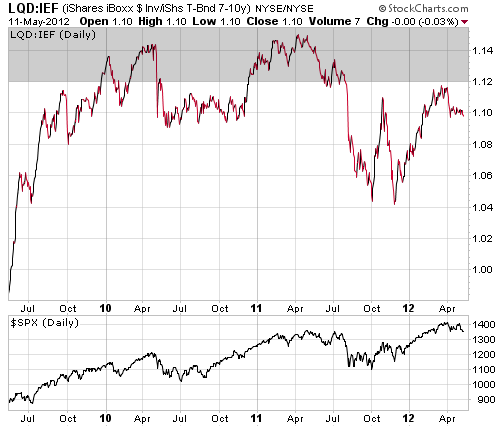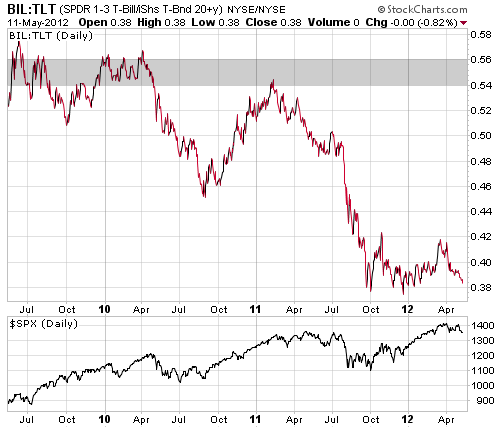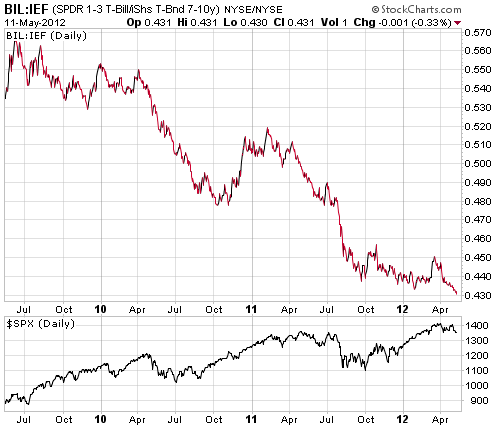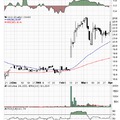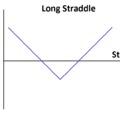A toolbox of useful indicators to gauge recession risk:
- The "credit spread" between corporate securities and default-free Treasury securities becomes wider than it was 6 months earlier. This spread is measured by the difference between 10-year corporate bond yields and 10-year U.S. Treasury bond yields (or alternatively, by 6-month commercial paper minus 6- month U.S. Treasury bill yields). This spread is primarily an indication of market perceptions regarding earnings risk and default risk, which generally rises during recessions.
- The "maturity spread" between long-term and short-term interest rates falls to less than 2.5%, as measured by the difference between the 10-year Treasury bond yield and the 3-month Treasury bill yield. A narrow difference between these interest rates indicates that the financial markets expect slower economic growth ahead. If the other indicators are unfavorable, anything less than a very wide maturity spread indicates serious trouble, regardless of unemployment, inflation, or other data.
- The stock market falls below where it was 6 months earlier, as measured by the S&P 500 Index. Stock prices are another important indicator of market perceptions toward credit risk and earnings expectations. While the economy does not always slow after a market decline, major economic downturns have tended to follow on the heels of a market drop. Stock markets tend to reach their highs when the economy "cannot get any better" -- unemployment is low and factories are operating at full capacity. The problem is that when things cannot get any better, they may be about to get worse.
- The ISM Purchasing Managers Index declines below 50, indicating a contraction in manufacturing activity. This index is strongly related to GDP growth, and when combined with the previous three indicators, has signaled every recession in the past 40 years.
---------------------------------------------
The following are some additional early warning indicators of an oncoming recession:
A sudden widening in the consumer confidence spread, with the future expectations index falling more sharply than the present situation index (currently in place). In general, a drop in consumer confidence by more than 20 points below its 12-month average has accompanied the beginning of recessions (not observed yet);
Low or negative real interest rates, measured by the difference between the 3-month Treasury bill yield and the year-over-year rate of CPI inflation. Last week, T-bill yields plunged to about the same level as CPI inflation, so this indicator is now unfavorable;
Falling factory capacity utilization from above 80% to below 80% has generally accompanied the beginning of recessions. This is not yet in place.
Slowing growth in employment and hours worked. The unemployment rate itself rarely turns sharply higher until well into recessions (and rarely turns down until well into economic recoveries). So while the unemployment rate is an indicator of economic health, it is not useful to wait for major increases in unemployment as the primary indicator of oncoming economic changes. As for employment-related data, slowing growth in employment and hours worked tend to accompany the beginning of recessions. Specifically, when non-farm payrolls have grown by less than 1% over a 12 month period, or less than 0.5% over a 6 month period, the economy has always been at the start of a recession. Similarly, the beginning of a recession is generally marked by a quarterly decline in aggregate hours worked. All of these indicators are slowing considerably, but they have not crossed to levels typically associated with imminent recession.
In short, the risk of recession is increasing, but we do not yet have the evidence to indicate that a recession is imminent or inevitable. Important data to monitor in the next few months will be the ISM figures, consumer confidence (especially a sharp drop), employment, hours worked, and capacity utilization.
A bejegyzés trackback címe:
Kommentek:
A hozzászólások a vonatkozó jogszabályok értelmében felhasználói tartalomnak minősülnek, értük a szolgáltatás technikai üzemeltetője semmilyen felelősséget nem vállal, azokat nem ellenőrzi. Kifogás esetén forduljon a blog szerkesztőjéhez. Részletek a Felhasználási feltételekben és az adatvédelmi tájékoztatóban.
